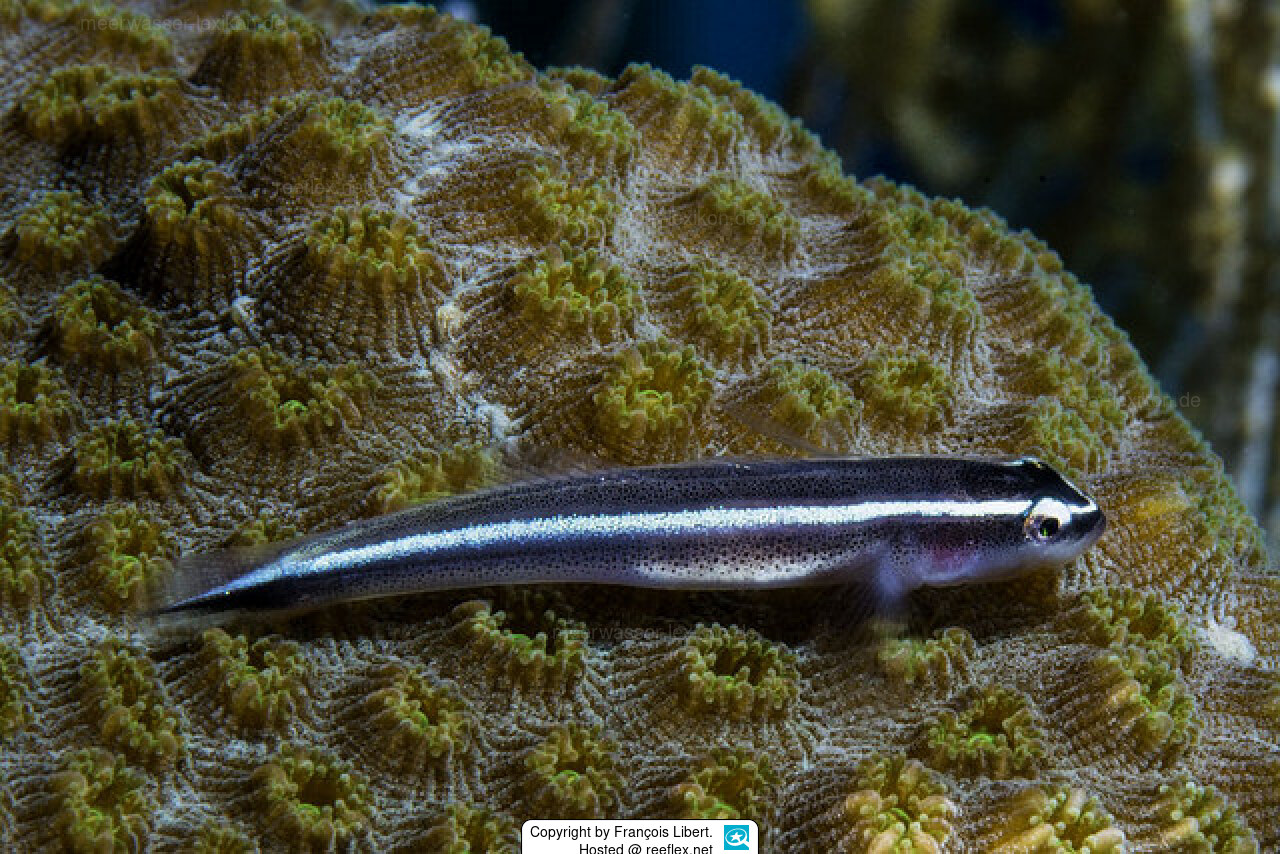Info
Jordan, 1904
Synonym:
Gobiosoma oceanops (Jordan, 1904)
Classification: Biota > Animalia (Kingdom) > Chordata (Phylum) > Vertebrata (Subphylum) > Gnathostomata (Superclass) > Pisces (Superclass) > Actinopterygii (Class) > Perciformes (Order) > Gobiidae (Family) > Gobiinae (Subfamily) > Elacatinus (Genus) > Elacatinus oceanops (Species)
Jumping guard
A jumping guard prevents (nocturnal) fish from jumping out.
Wrasses, blennies, hawkfishs and gobies jump out of an unprotected tank in fright if their night rest is disturbed, unfortunately these jumpers are found dried up in the morning on carpets, glass edges or later behind the tank.
https://www.korallenriff.de/en/article/1925_5_Jump_Protection_Solutions_for_Fish_in_the_Aquarium__5_Net_Covers.html
A small night light also helps, as it provides the fish with a means of orientation in the dark!
am 20.04.17#4
ps: Strömungspumpenkammer, würde daher zerhäckselt werden wenn diese wieder angeht
am 20.04.17#3
Achtung - geht bei mir in die Pumpenkammer während der Fütterung, daher nicht den 10 Minuten Timer stellen und ab in die Arbeit usw. ....
am 22.02.15#2
Ich halte 2 von diesen schönen Tieren in meinem 300 Liter Becken. Ich hatte ein Paar bestellt, bin mir aber nicht sicher ob es sich auch wirklich um eines handelt, da sie sich Phasenweise (alle paar Tage) für ein paar Sekunden durchs Becken jagen. Einen besonderen Unterschied kann ich nicht erkennen.
Normalerweise ist es aber so, das jeder von ihnen einen bestimmten Platz im Becken bezogen hat. Sie sitzen meist auf etwas erhöhten Punkten im Riff.
Mit allen anderen Fischen/ Wirbellosen verstehen sie sich ohne Probleme, die größeren Fische akzeptieren sie ebenfalls und lassen sich ab und zu sogar von ihnen putzen.
Sie nehmen ihre Putzerarbeit sehr ernst,sobald man Hand im Becken anlegt kommen sie zutraulich angeschwommen und beginnen die Hand zu "beknabbern".
Beide haben Frost, Lebend, sowie Flocken und sogar Granulatfutter problemlos ab dem 1- Tag angenommen.
Alles in allem ein toller Fisch für kleine aber auch große Aquarien und ein echter Hingucker.
Beim eingewöhnen schienen sie keinerlei Probleme zu haben, obwohl sie viel zu kalt bei mir ankamen.
Kleiner als 100 L pro Tier würde ich persönlich aber nicht empfehlen.







 François Libert, Frankreich
François Libert, Frankreich








































